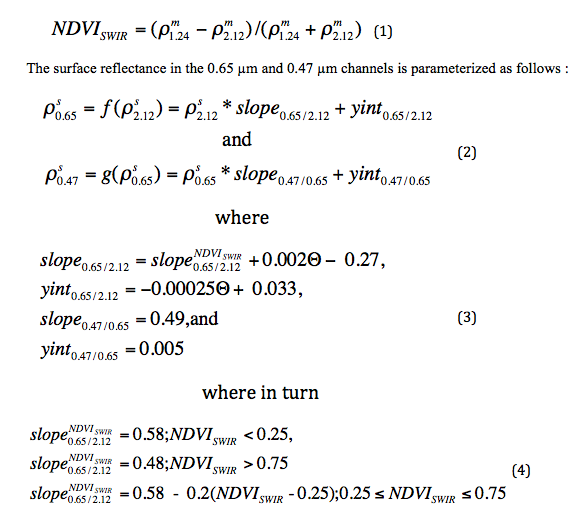Surface Reflectance Assumptions
When performing atmospheric retrievals from MODIS or any other satellite, a major challenge is separating the total observed reflectance into atmospheric and surface contributions. Over the open ocean, the surface reflectance is nearly zero in the 0.65 µm so assuming negligible surface reflectance in these channels is a good approximation. Moving from coastline onto land, however, the surface reflectance in 0.65 µm and longer channels can be far from zero and vary over surface type. As the land surface and the atmospheric signals are comparable, errors of 0.01 in assumed surface reflectance can lead to errors on the order of 0.1 in t retrieval (Kaufman et al., 1997b).
The surface reflectance in the visible wavelengths (0.47 µm and 0.65 µm) is parameterized as an empirically derived function of the 2.1 µm surface reflectance, NDVISWIR and scattering angle (Q). NDVISWIR is an aerosol resistant measure of vegetation ‘greenness’ using the 1.24 µm and 2.1 µm channels, defined as:

